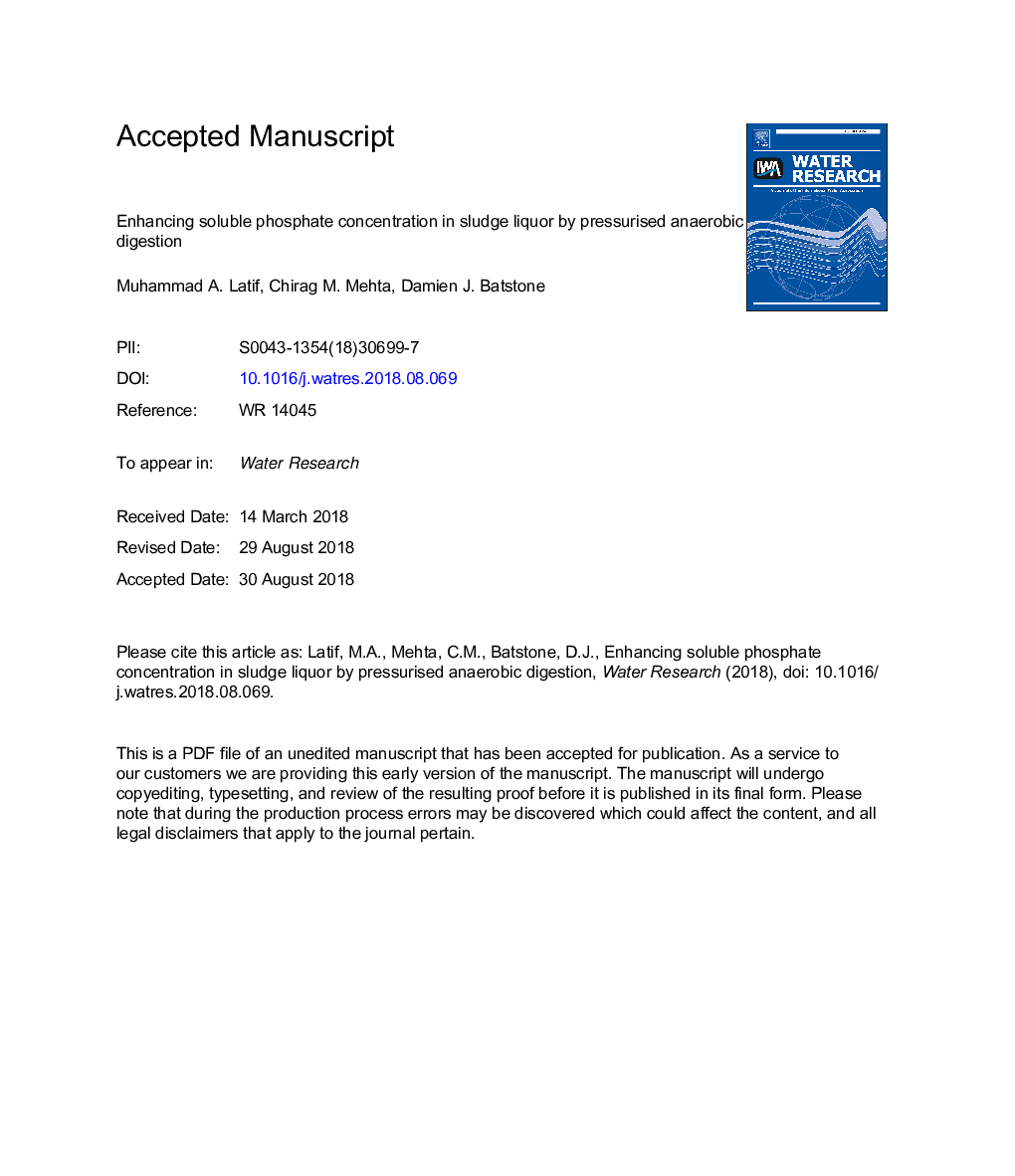| Article ID | Journal | Published Year | Pages | File Type |
|---|---|---|---|---|
| 10115978 | Water Research | 2018 | 25 Pages |
Abstract
Recovery of phosphate from wastewater is challenging, with one of the best opportunities being recovery from sludge anaerobic digestion liquor, as struvite. However, this is limited by the proportion of total phosphorous which is soluble, due to in-digester metal ion precipitation. High-pressure anaerobic digestion may enable enhanced phosphate solubility (and hence recovery potential), without the use of added acid, due to an increased liquid phase CO2 concentration. This was tested at 2, 4, and 6â¯bar absolute (bara) vs a 1 bara control reactor, fed with activated sludge. Increased pressure significantly (pâ¯=â¯0.0008), increased the fraction of phosphate that was soluble, ranging from 52% at 1 bara, to 75% at 6 bara. Model based analysis indicated that the main reason for increased solubility was pH depression (down to 6.4â¯at 6 bara), rather than changes in ion pairing (with carbonates) or increases in ionic activity. However, biological performance was adversely impacted, with a substantial loss in VS and COD destruction (on the order of 5%-10% absolute). No organic acid accumulation was observed. Bacterial and archaeal communities were significantly impacted (pâ¼0.0003-0.0005), with a shift to specific organisms, including Bacteroidales Rikenellaceae within the bacteria, and a Deep Sea Euryarchaeotal Group at 2 bara, and Methanocellaceae within the archaea at 4 and 6 bara. The work indicates that high-pressure operation is a technically viable option to improve phosphate recovery, and produce a high-methane biogas product, but that the loss of overall conversion needs to be further addressed, possibly through two-stage digestion.
Related Topics
Physical Sciences and Engineering
Earth and Planetary Sciences
Earth-Surface Processes
Authors
Muhammad A. Latif, Chirag M. Mehta, Damien J. Batstone,
